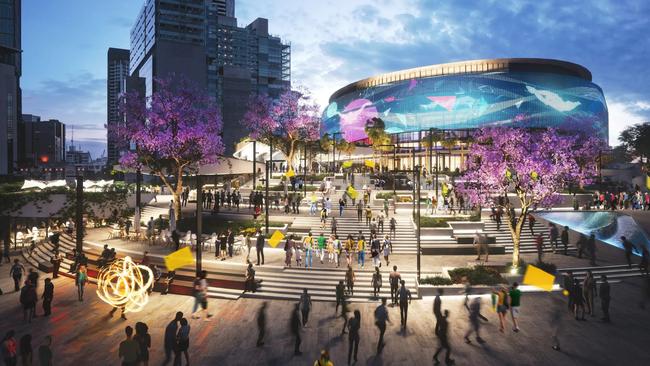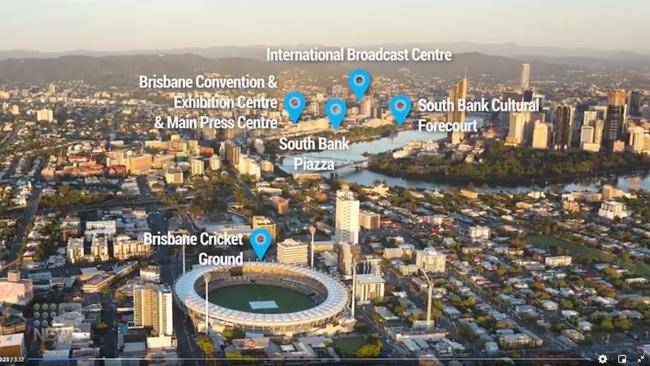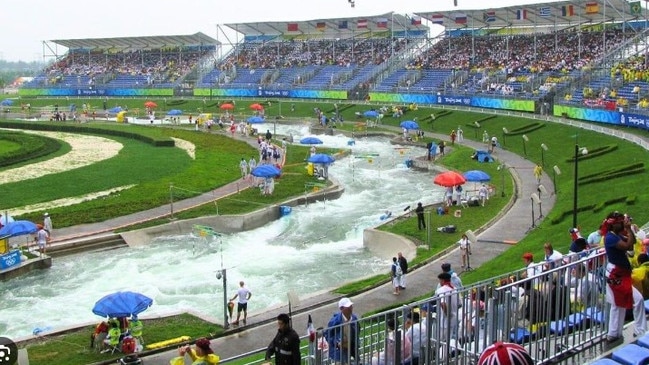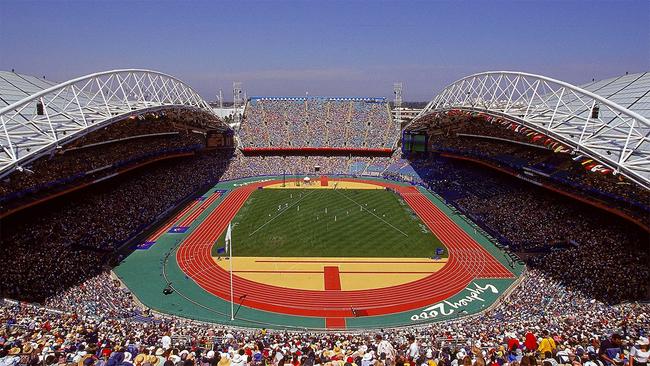Olympic legacy handover: Sydney 2000 to Brisbane 2032 | POLL
Will Brisbane outstrip Sydney 2000’s gold medal performance as an Olympic host or are the past three years of indecision a sign of further delays for the River City’s proposed venues? Vote in our poll.

Brisbane City
Don't miss out on the headlines from Brisbane City. Followed categories will be added to My News.
Is Brisbane going down the route of being a Games of most convenience, where venues and plans are sacrificed for cost-cutting, or will they be Brisbane’s Legacy Games?
With 1436 days, or 47 months, until the start of the Brisbane 2032 Olympics, which begin on July 23, 2032, many are reflecting on how Brisbane will measure up against the high standards set by Sydney 2000.
Premier Steven Miles said this month that controversy and disagreements about the 2032 Olympics would be forgotten when the River City puts on a spectacle to match Paris and Sydney.
But is time running out?

Sydney won the bid to host the Olympics in 1993, giving it about seven years to plan and prepare.
Brisbane, on the other hand, won the bid to host the Games in 2021, giving it roughly 11 years for preparation before the 2032 event.
In April, International Olympic Committee member John Coates told a Senate inquiry into Brisbane’s preparedness for the Games that he wasn’t concerned about infrastructure delays, comparing the 2032 plans favourably to progress in Sydney for the 2000 Games.
In July, the Games Venue and Legacy Delivery Authority was set up to oversee delivering all the new and upgraded venues and infrastructure.
The Brisbane 2032 Organising Committee backed Coates with a statement this week claiming it had made “significant headway” since being set up in 2021 with a strategy and Games plan in place.
“The Brisbane 2032 Olympic and Paralympic Games is eight years away, with preparations well ahead of when previous Games have traditionally been awarded, approximately seven years out,” a spokesman said.
“We have progressed our commercial and legacy programs, our brand and emblems are developing, and we’re delivering our inaugural Reconciliation Action Plan.”
But despite more than a decade to plan, preparations have been bogged down as the Brisbane Organising Committee for the Olympic and Paralympic Games, known as BOCOG, politicians, and planners try to avoid mistakes of previous hosts with huge sums of money spent building stadiums that ended up as white elephants.
But 24 years after the Sydney Olympics, Austadiums claims its infrastructure has a long-lasting legacy and all continue to host major events.
BRISBANE VENUES
A long-awaited vision to overhaul South Bank was put on hold while “adjustments” to Games venues were made.
The Breakfast Creek Indoor Sports Precinct at Albion will not proceed, with the panel recommending an indoor sports centre be built in Zillmere or Boondall instead.

The proposed upgrades to the Toowoomba Sports Ground will also not proceed.
The Brisbane Live Arena is also changing locations, with the new site now at the Roma St precinct.
Brisbane’s initial bid pitched as many as 38 venues, with seven to be built specifically for the event, but with the potential to reduce to just two new centres.
Initial plans outlined in an IOC Feasibility Report in 2021 showed 21 venues would be proposed for Brisbane, six on the Gold Coast, three on the Sunshine Coast, and nine others around the country in Melbourne, Sydney, Ipswich, Townsville, Cairns, and Toowoomba.
In August, there were 36 venues listed, with 22 in Brisbane, including six still to be built. By comparison, Sydney played host at 19 venues distributed across the state, including 10 built specifically for the event.
One of the largest in Brisbane will be the $2.5 billion Brisbane Arena for swimming events, with the exact location at Roma St still to be confirmed.
The high-performance Chandler Indoor Sports Centre, featuring 10 multi-sport courts and a 2,400 sqm gymnastic facility with seating for 10,000, is also yet to be built.
No location has been set for the Brisbane Indoor Sports Centre, but the Moreton Bay Indoor Sports Centre will be built at the Mill Precinct in Petrie, with construction expected to begin in early 2026 and the centre operational from 2028.
The 6000-seat Sunshine Coast Indoor Sports Centre, with 11 multifunctional courts, received $142 million in May, and construction is set to start late next year and be completed and open in late 2027.

Redland’s proposed Olympic whitewater venue at Birkdale has hit snags after outraged ratepayer groups took complaints about the prospects of it becoming a white elephant to the April Senate hearing.
BOCOG and IOC plans show completion of all venues, including the Brisbane Arena, Redland Whitewater Centre, and Victoria Park facilities, by 2028-2029.
That will give organisers and officials about four years before the opening ceremony to test the facilities, unlike in Sydney where the final venue, The Dome, was not finished until January 2000.
SYDNEY VENUES
The Sydney Olympic Park Authority said the late completion of The Dome was part of an overall strategy to ensure it was built to the latest specifications and standards, and incorporated all last-minute changes and requirements.
All the other major venues for the 2000 Games, including the Sydney Aquatic Centre, Sydney Olympic Park Tennis Centre, and the Sydney International Regatta Centre, were completed and ready in 1999.

Sydney’s largest Olympic venue, the Sydney Olympic Stadium, now Accor Stadium, took three years to build and was completed in April 1999, giving officials and athletes 17 months to test the facilities.
Brisbane is yet to definitively decide where its main venue will be, with plans moving from the $2.7 billion Gabba redevelopment to a $3.4 billion precinct at Victoria Park, Herston, and later to the Queensland Sport and Athletic Centre at Nathan.
Sydney’s other large Olympic venue, the Sydney International Athletic Centre, now known as the Sydney Olympic Park Athletic Centre, took more than two years and $80 million to build.
It was built specifically for track and field, with construction starting in 1997 and completing in December 1999.
While Sydney 2000 set a groundbreaking example, the IOC believes that Brisbane 2032 has the chance to redefine what it means to host a truly sustainable Olympic Games.
The real challenge for politicians and planners lies in turning ambitious plans into impressive, long-lasting changes that resonate beyond the closing ceremony.





